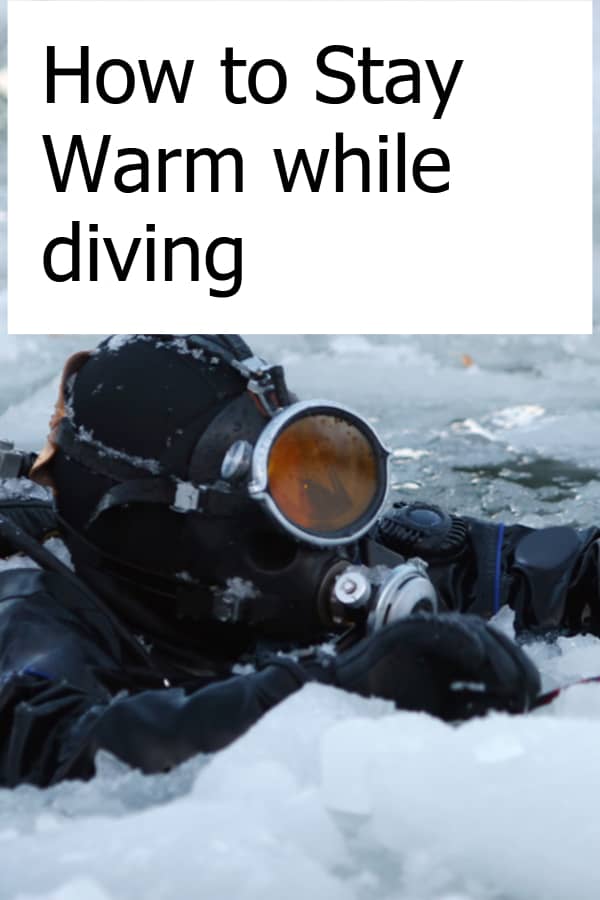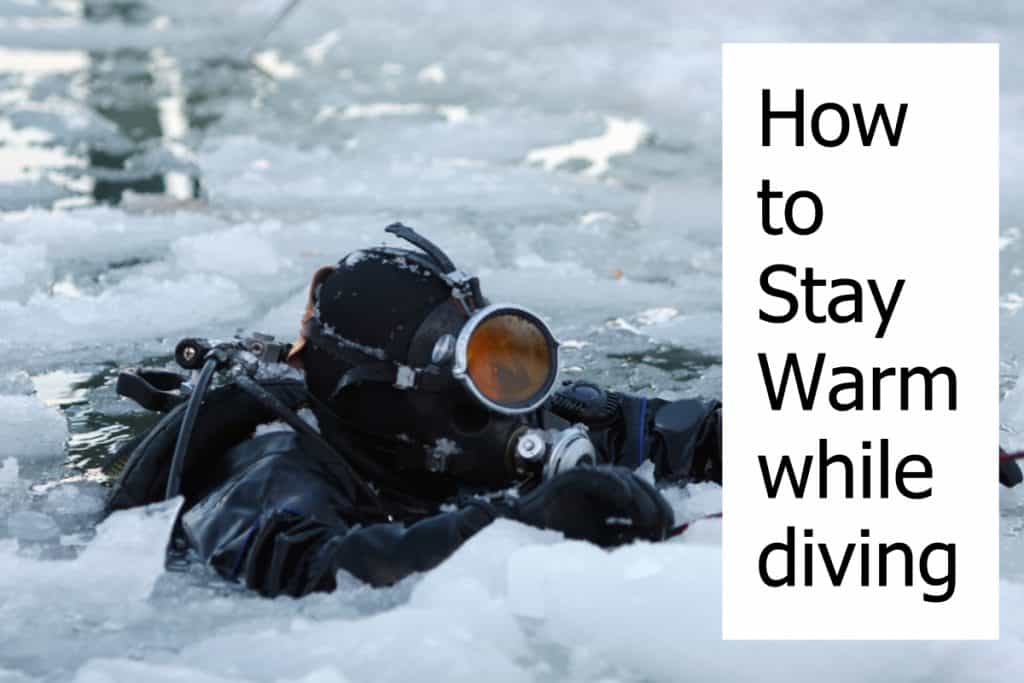How to Stay Warm while diving
Some of the best diving spots are rarely explored simply because they exist in colder climates. But for the divers who are brave enough to face the cold, it can be a great experience.
Plus, there are a few simple ways to keep yourself warm and cozy under the water.
Basic Equipment
The most fundamental item that will keep you warm under the water is your suit. So, make sure to take the time to find one that is going to be just right for your dive.
Your first consideration is whether to buy a wetsuit or a drysuit. When it comes down to it, the main function of both suits is to slow down the process of heat loss.
A wetsuit achieves this by adding a layer of insulation, and a dry suit does it by keeping all water out and allowing you to layer thermal undergarments.
How you choose one or the other is going to depend on how much you’re willing to spend and whether you’ll be diving repeatedly in the same conditions.
For example, if you’re going to be diving in these very same conditions multiple times, you may feel more comfortable putting in the extra money for a drysuit. But, if you expect to be in a variety of different temperatures and want something more versatile and cheaper, you’ll go for a wetsuit.
What do you Wear Under a Wetsuit to improve Protection and Warmth?
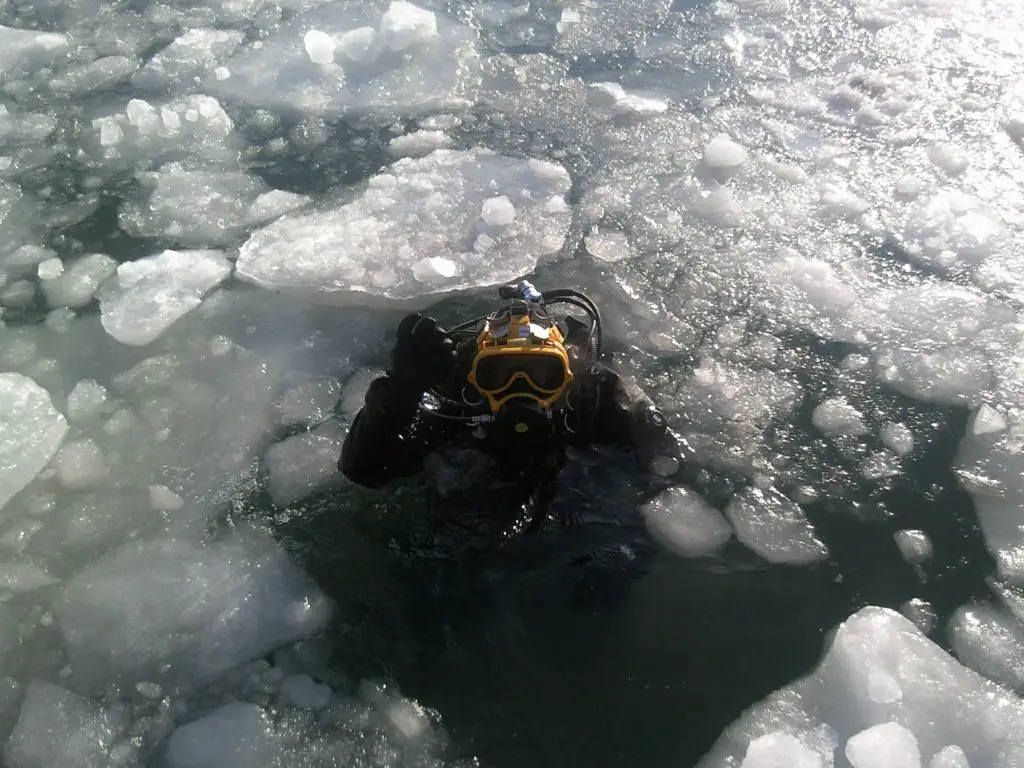
Is an Open Cell or Closed Cell Wetsuit better for Scuba Diving?
Find the right wetsuit
For the purposes of this guide, here’s a bit more information on finding the right wetsuit:
The right thickness to stay warm
While every brand will have its own guidelines on the best thickness for temperature, you can be fairly sure that anything below 62˚ or 63˚ degrees is going to require a torso thickness of 3mm and up.
You’re looking for high-quality material for your wetsuit that is thick enough to keep you insulated but not stiff or restrictive, so make sure that you try on your suit before buying it.
Get the right stitching
Another important consideration is the stitching. There’s no use in buying a thick wetsuit if cold water can seep through the seams, so look for a suit with blind-stitching and sealed or taped seams.
While there are plenty of articles on the specifics of these seams, the most important thing about this way of manufacturing a wetsuit is that it is waterproof, flexible, and extremely durable.
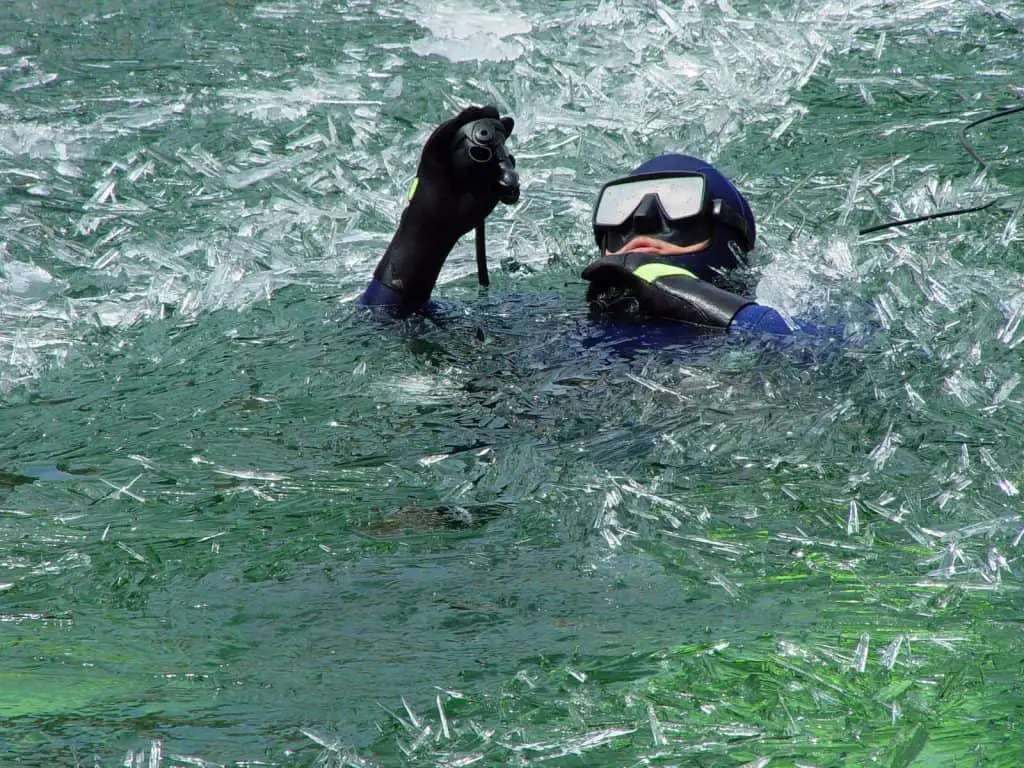
Special Gear
Now onto the additional items that will help keep you warm.
Hoods
We all lose a significant amount of heat out of the top of our heads, whether we have thick hair or none at all. The best way to prevent that heat loss is by wearing a hood, and there are a few great options on the market.
Finding a good one is pretty easy: you want something with a thickness of 3mm and up, which covers as much of your face as possible and has a long bib that will tuck under your wetsuit. Getting the sizing right can be a bit trickier. Look for a hood that is snug enough to not allow water to flow underneath, but not something so tight as to restrict breathing.
Gloves
Again, you’re going for thick and flexible, with quality stitching. Some divers prefer the traditional five-finger design while others opt for the three-finger mitt style.
Try some out at your local dive shop to see which ones feel comfortable. If you already have gloves that you think might not be quite warm enough, you can also look into finding a glove liner that will add another layer of warmth and protection.
Booties
Along with the hood and gloves, the boots you choose will have to be a thicker neoprene. But there are a few other considerations here as well.
For one, avoid a short boot. Any opportunity for water to creep into your wetsuit will leave you regretting your buying decision, so opt for a high cut that will overlap with your wetsuit.
Also, depending on where you’ll be diving, closer to the shoreline where there are rocks and other hazards, or in a more open setting, you’ll have to decide whether you want a thicker, sturdier sole.
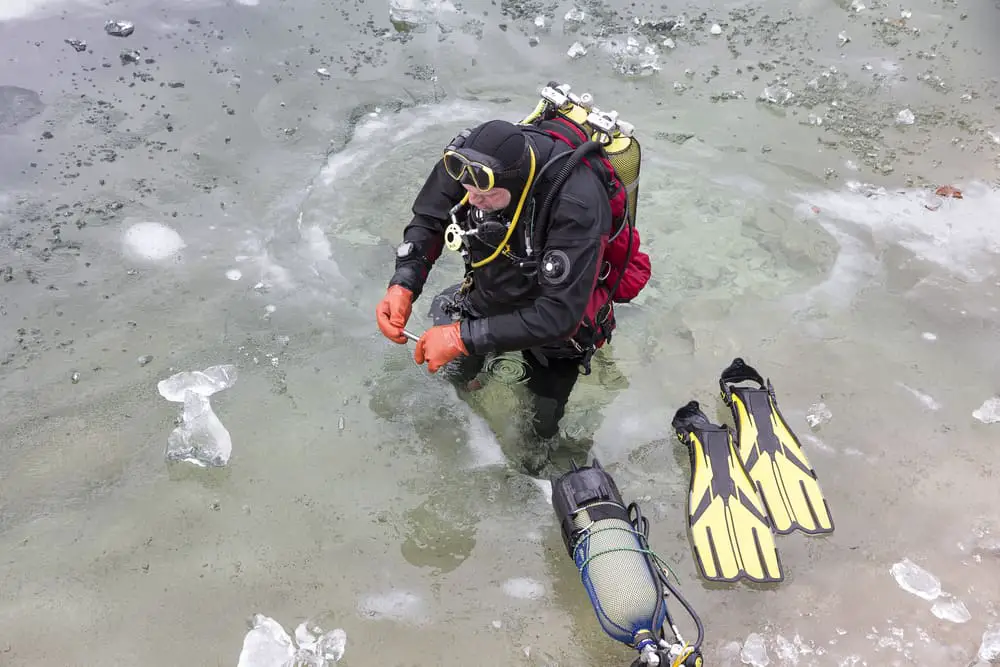
Tips and Tricks
Eat a good meal.You should be eating a nutritious meal every time you dive, but this is especially true when you’re gearing up for a cold-water dive. Foods that are high in protein, calories, and healthy fats are all great for warming you up and keeping you energized. A typical pre-dive meal, for example, might consist of hard-boiled eggs, nuts, and fibrous fruit, like an apple or a banana.
Stay hydrated.Aside from eating a hearty meal, you need to also make sure that you’re drinking enough water and avoiding dehydrating beverages like coffee or alcohol. The more that your body has to work to maintain homeostasis because of a lack of water, the more difficult it will be to keep that core temperature where it needs to be.
Be warm before you start. This means layering with hoodies, coats, socks, and blankets while you’re waiting to get in the water. The reason this works is that heat loss is not an on-and-off switch but rather a gradual process. If you get into the water with higher body temperature, it will take a little bit longer to become cold under the surface.
Rinse out your wetsuit with warm water. Stepping into a wetsuit that has just been doused in warm water will also help to keep this internal body temperature high before you step off the boat. Plus, it’s a really cozy way to start off your dive!
Time to brave the cold!
Diving in cold water is definitely an experience that is worth the effort. And with these tips, you should be able to avoid a situation that is uncomfortably cold. So, gear up! You’re in for a truly amazing dive.
